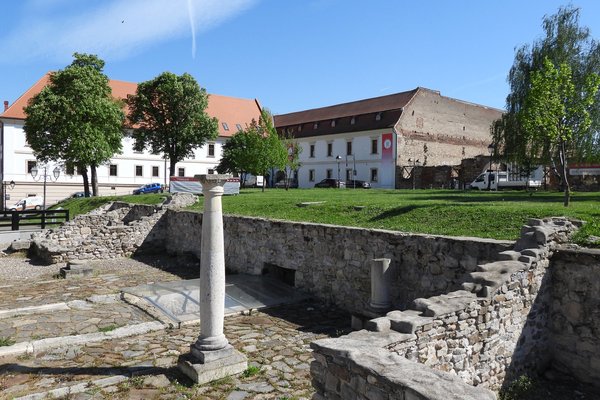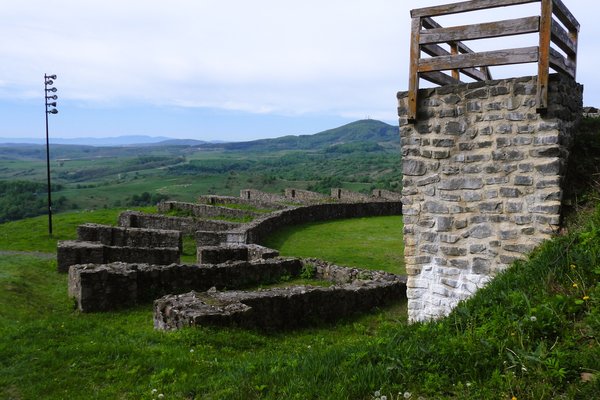Romania
Dacian Limes
The Dacian limes is the longest land Roman border sector of Europe, stretching over more than 1000 km.
It comprises hundreds of Roman sites all across Romania. Various geographical conditions had to be overcome to create man-made barriers and fortifications.
Community Perspective: Nan checked a few remnants here and there and finally settled on Alba Iulia, while Els visited Porolissum which is the main site in the Northwest and probably the best-preserved overall.
Site Info
Official Information
- Full Name
- Frontiers of the Roman Empire Dacia (ID: 1718)
- Country
- Romania
- Status
-
Inscribed 2024
Site history
History of Dacian Limes
- 2024: Inscribed
- Inscribed
- Type
- Cultural
- Criteria
- ii
- iii
- iv
Links
- UNESCO
- whc.unesco.org
- Official
-
- limesromania.ro — Limes Romania
All Links
UNESCO.org
- whc.unesco.org — whc.unesco.org/
Official Website
- limesromania.ro — Limes Romania
Community Information
- Community Category
- Archaeological site: Ancient Rome
Travel Information
Exact locations inscribed twice (or more)
Recent Connections
-
Danube
Trajan's Bridge, the first bridge to be…
-
Notable Bridges
Trajan's Bridge (Demolished): component…
-
Perfect Inscriptions
2024
Connections of Dacian Limes
- Individual People
-
-
Emperor Trajan
"Under Emperor Trajan, Rome conquered the Dacian Kingdom of Decebalus after two wars (101-102 and 105-106 CE), involving thirteen-fourteen Roman legions and approximately 150,000 soldiers."(AB ev) "In 106, at the beginning of his second war against the Dacians, Emperor Trajan established a military stronghold at the site to defend the main passageway through the Carpathian mountains." (wiki Porolissum)
-
- Trivia
-
-
Serial sites with the greatest number of locations
277 components
-
- History
- World Heritage Process
-
-
Exact locations inscribed twice (or more)
"five of the nominated component parts are included in the already-inscribed World Heritage property Dacian Fortresses of Orăștie Mountains" (AB ev) -
Perfect Inscriptions
2024
-
- Human Activity
-
-
Salt
"Sector 4 (northern limes) consists of seventy-six component parts (in three counties), including.. salt quarries," (AB ev)
-
- Constructions
-
-
Baths
Roman public baths at Porolissum; Potaissa: the thermal baths, with an area of over 2,000 m2, are the biggest military thermae known in Dacia.(wiki) -
Frontier walls
Roman -
Notable Bridges
Trajan's Bridge (Demolished): component 1718-007 Drobeta-Turnu Severin -Podul lui Traian (wiki)
-
Roman amphitheatres
At Porolissum: "The amphitheatre, with 5000-5500 seats, was built as a wood structure during the reign of Hadrian. In 157 AD it was rebuilt in stone" (wiki)
-
- WHS on Other Lists
-
-
Memory of the World
"The illuminated manuscripts of Charlemagne’s Court School" include the original Codex Aureus, of which an original part now is at the Batthyáneum LibrarySee centrulcodex.com
-
- Timeline
-
-
Built in the 2nd century
The Dacian Frontier was part of the Roman Frontiers from 106 to 271 CE. (AB ev)
-
- WHS Names
-
-
Roman Province in its official title
Dacia. Created 106AD
-
News
No news.
Recent Visitors
Visitors of Dacian Limes
- Afshin Iranpour
- Alberto Rodriguez Gutierrez
- Alexander Lehmann
- Ana Lozano
- Argo
- Aspasia
- Atila Ege
- BaziFettehenne
- Bin
- Cezar Grozavu
- Christoph
- Clyde
- DavidS
- Dimitar Krastev
- Els Slots
- Eva Kisgyorgy
- Evgenii
- Feldhase
- George Gdanski
- Gernot
- Hadrianus
- Harald T.
- Ingrid
- Ivan Rucek
- Jakob F.
- Janina Lehmann
- Janos
- Jan-Willem
- Jarek Pokrzywnicki
- Jezza
- JobStopar
- Jonas Kremer
- jonathanfr
- Karito Vies
- Lisu Marian
- Luboang
- Lucio
- Lukasz Palczewski
- Maciej Gil
- Martina Rúčková
- MatusBeber
- Mihai Dascalu
- Mikko
- Miloš Tašković
- nan
- Patrik
- Paul Schofield
- Petri Jurescu
- Philipp Leu
- Philipp Peterer
- Piotr Wasil
- Rafał Kałczuga
- Ralf Regele
- Randi Thomsen
- Roger Ourset
- Roman Raab
- Stanislaw Warwas
- Svein Elias
- Szucs Tamas
- Tamara Ratz
- Taotao Chen
- Tevity
- Thomas Buechler
- triath
- Tsunami
- Twobaconsandaboston
- Wojciech Fedoruk
- Yevhen Ivanovych
- Zoë Sheng
Community Reviews
Show full reviews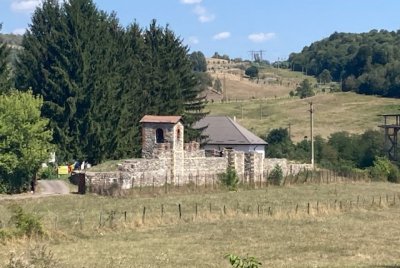
August 2024 - Another Limes WHS! Good that it got inscribed before our trip, so we knew what to look for. At the end, we ended up just activly visiting 2 components. Alba Iulia and Jidova.
Alba Iulia is amazing though. We spent two hours here, and admired the old roman remains. Jidova (picture) was rather a spontaneous stop. The remains there are also by far more interesting than all these Limes components in Germany.
I am curious how many more WHS will evolve from the Roman Empire era.
Keep reading 0 comments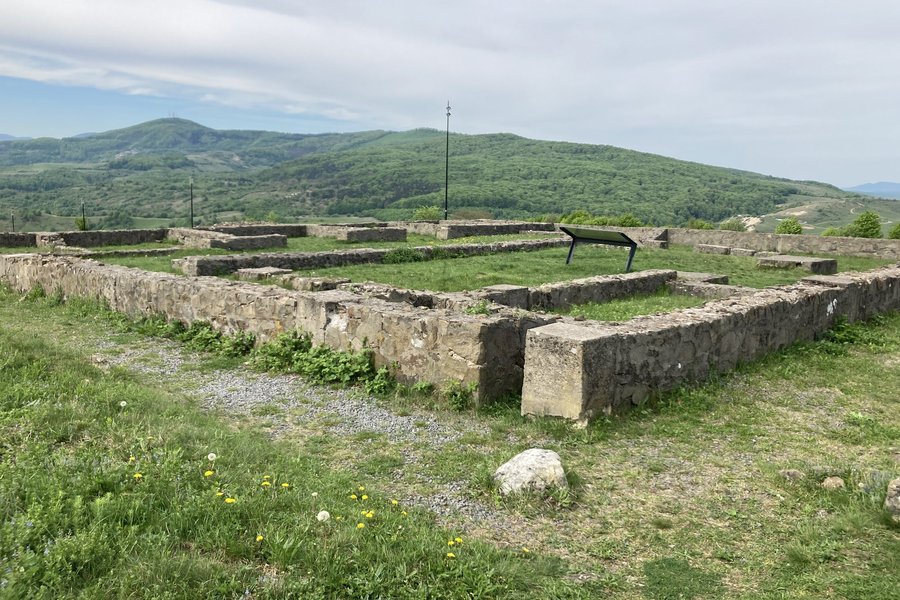
The Dacian Frontiers of the Roman Empire comprises over 300 separate locations, so which site to visit for a representative experience? At first, I zoomed in on Potaissa, nicely located halfway between Cluj and Alba Iulia in Turda. But this site is still closed after extensive restorations; it may open up later this year. Alba Iulia itself is a sure bet but also a bit ‘boring’ as it is also a TWHS on its own and already covered by reviews. The prime Dacian-Roman archaeological site, however, seems to be Porolissum. It meant a 1.5-hour detour north on my itinerary, but it was worth it.
Porolissum is advertised by roadside signs already from 60km away. There isn’t much else of tourist interest in the wider area, although the Wooden Churches of the Maramures are not far away, and you see fine wooden churches by the road here too. Like the Maramures, which I visited in 2010, this is a poor area where horse-and-carriages still can be seen on the road and Roma communities live in squalor.
The signposting to the site is excellent until about 100m before the entrance: I lost track and asked for the way at a souvenir shop – the site entrance turned out to be just beyond that shop, turn to the right and there is a small bump in the road which prevents you from seeing the parking and guard station. The entrance costs 11 lei and can be paid (in cash) to the guard …
Keep reading 0 comments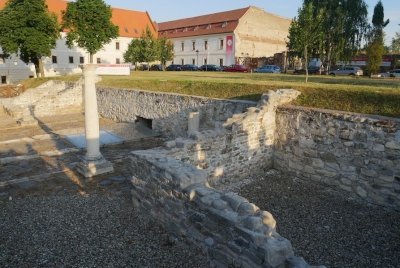
The Roman Empire had it's largest extend under Trajan. He defeated the eternal enemy of Rom, Parthia, and incorporated Mesopotamia as a province into the empire. However, the conquest was short lived. His immediate successor, Hadrian of Hadrian's Wall fame, cut Mesopotamia lose again. It was too far away from the heartland of the empire and consequently too hard to defend.
The second conquest of Trajan, though, remained a Roman province for about 150 years: Dacia, present day Romania. The reason were the Dacian gold mines in and around Rosia Montana (already inscribed). To get a glimpse, you can visit the National Museum of Art of Romania in Bucharest where several gold pieces pre and post Roman are on exhibition.
In comparison to other Limes sites, the Dacian Limes has a very odd form. It does not follow natural features and it does not create a short border. Instead it creates a bulge extending away from the Danube that includes the gold mines.
During my visit to Romania, I managed to visit a few sites. In Cluj, I walked up a local hill in search of a watchtower. I think I made it to the location, but there was nothing to see. Near Rosia Montana in Abrud, I searched for remnants of a castle, but again, there was nothing to see. Best site was in Iulia Alba, a tentative site on it's own, where a ruins of a Roman castle can be visited.
OUV
If …
Keep reading 0 comments

